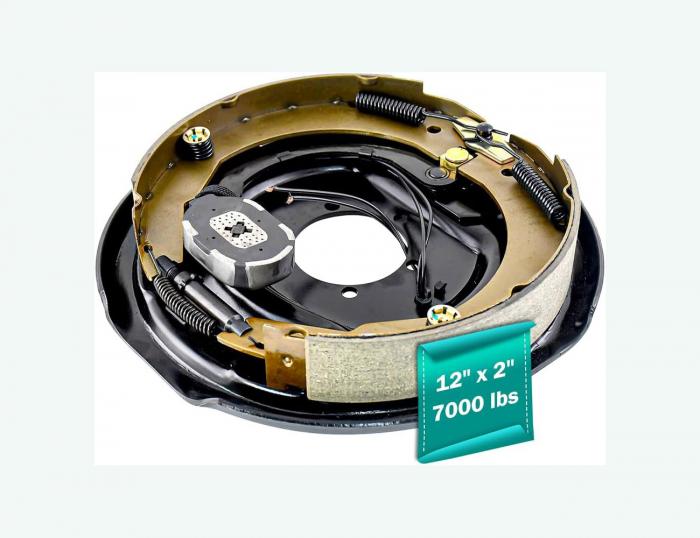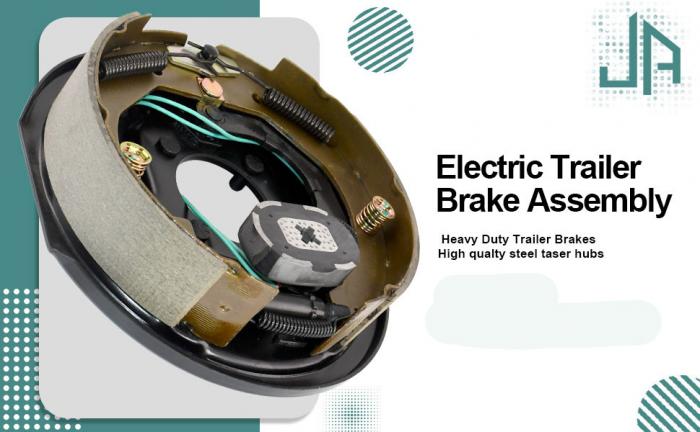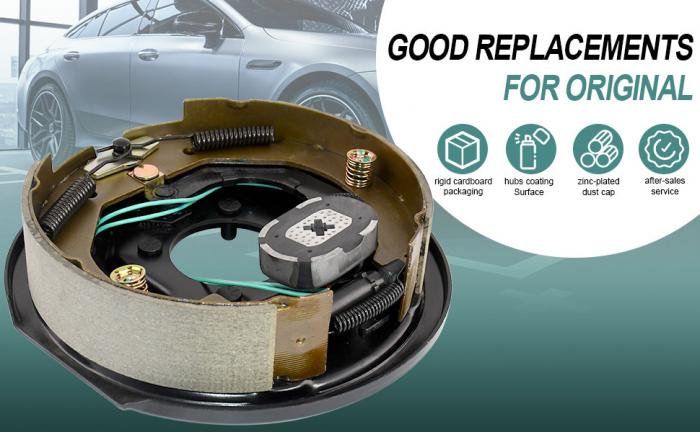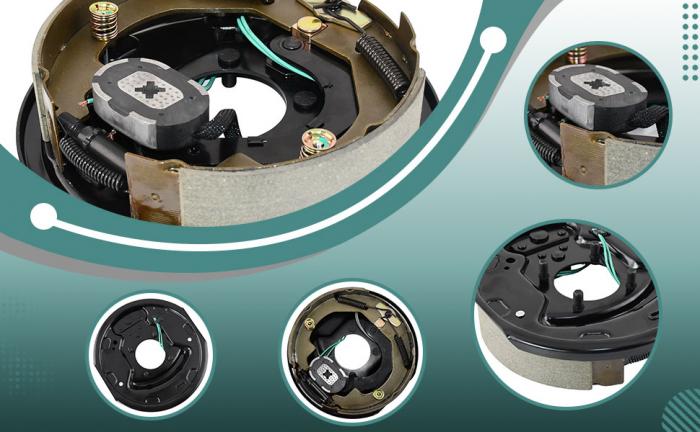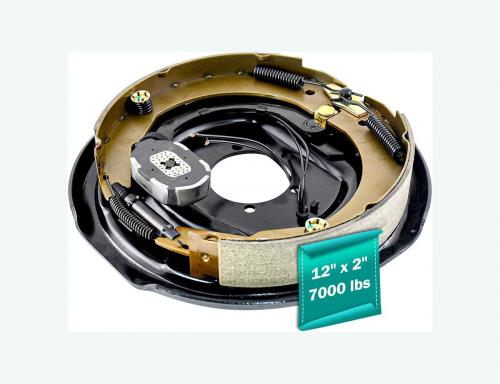|
|||||||||||||||||
Product Description
Dexter Trailer Brakes - 23-180-181
· 7000 lbs Axle
· Electric Drum Brakes
· 12 x 2 Inch Drum
· Standard Grade
· 14-1/2 Inch Wheel
· 15 Inch Wheel
· 16 Inch Wheel
· Manual Adjust
· Dexter
Whether you're replacing your trailer brakes or installing some on a new brake axle, these are easy to work with from start to stop. 12" x 2" Assemblies fit 14.5" to 16" wheels. 5 bolt pattern backing plate.
Features:
· Easier to install and gives you more control than hydraulic brakes
o Requires only an electric brake controller (sold separately) - no actuator or hydraulic lines needed
· Periodic manual adjustment required
o Can be done in minutes
· Long-lasting brake pads offer excellent braking torque
o Fully bonded to shoes for more consistent braking compared to riveted pads
· Adjuster plugs (included) protect internal components from dirt, grime, and road debris
· Left-hand (driver's-side) and right-hand (passenger's-side) brake assemblies included
o Includes mounting nuts (bolts sold separately)
Specs:
· Application: most standard hub-and-drum assemblies, including etrailer, Dexter, and Lippert (LCI)
· Dimensions: 12" diameter x 2" wide
· Mounting flange bolt pattern: 5 bolt
· Wheel size: 14-1/2", 15" or 16"
· Axle rating: 7,000 lbs
· Limited 5-year warranty
Quick Tip: There's really not a whole lot to getting new drum brakes. If you've confirmed that all of the specs listed above line up with what you need for your trailer, you can be pretty sure these will work for you.
How to Manually Adjust Trailer Brakes
The more miles you put on your trailer, the more your brake pads will wear down. As they lose contact with the drum, stopping distances get longer and longer. To keep your brakes working great, it's important to adjust them pretty routinely. For this job, grab a floor jack and either a brake adjustment tool (sold separately) or just a standard flathead screwdriver.
Jack up your trailer enough to get the wheel(s) off the ground. Remove the adjuster plugs from the backing plate on the brake, and insert the flat end of the tool through the back of the assembly.
Push in on the star gear and lift it up. Keep doing this until the brake pads catch on your drum. When you can't spin your wheel by hand anymore, back the gear off by about 10 clicks by pushing down on the star gear. Does the wheel now spin freely (even if it sounds like the brake pads drag slightly on the drum)? Great! Then you're all done with that one and ready to adjust the rest.
How to Break In New Brakes
After you get these brakes installed and adjusted, you'll need to break them in. First, find a long stretch of road or a big, empty parking lot. Once you're there, set your brake controller to its maximum setting and get moving. Speed up to about 40 mph and brake to slow to about 20 mph. Repeat this 15-30 times. The goal is to get the brake shoes and magnet properly seated into your drum. You'll know you've done that when it feels less jerky (and more consistent) each time you apply the brakes.
Note: The brakes will be very hot after doing this, so after every 10 stops you'll want to wait about 10 minutes to let the brakes cool off before continuing. If you don't, you might cook and crack the pad material.


